Should I plant the Red Arrow F1 hybrid tomato: characteristics that may influence your choice
The health benefits of tomatoes are scientifically proven. Tomatoes, like oranges and lemons, contain an increased amount of vitamin C. This vegetable also contains folic acid, carotene and a number of B vitamins.
After a long winter, you want to pamper yourself with early homemade vegetables. For this, summer residents grow early ripening tomatoes in seedling methods. Popular early harvest tomatoes include the Red Arrow F1.
The content of the article
Characteristics and description of tomato hybrid Red Arrow f1
Hybrid Red Arrow included in the Russian State Register breeding achievements back in 1992 and is intended for cultivation in all regions of the country.
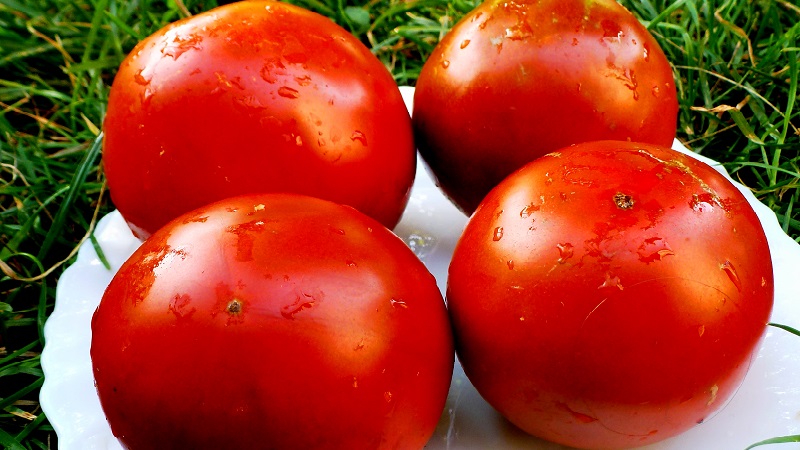
Yields a harvest within 100 days after planting seeds... The culture is grown both in the open field and in greenhouse conditions. The plant has an average amount of foliage and does not need pinching. The height of the bush depends on the growing method. Its growth varies between 100-150 cm. On an average plant (120 cm), up to 12 brushes are formed. They are located at a distance of one sheet from each other.
Red fruits are rounded, slightly elongated.... The dense shell of tomatoes does not crack when the humidity changes. The use of vegetables is universal, the pulp is fleshy, has a rich sweet taste with a slight sourness. Tomatoes are used for canning and preparing summer salads.
On a note. There is a small spot at the base of the fruit, which disappears without a trace when ripe.
The weight of one tomato is on average 100 g, but with good fertilization the vegetable reaches 150 g... The small seed chamber has few seeds. The hybrid has a high yield. From 1 sq. m of beds vegetable growers collect from 20 to 25 kg of tomatoes. One bush yields from 3.5 to 4.5 kg of tomatoes.
When transported over long distances, tomatoes retain their presentation well, do not crack or rot. The early harvest of the Red Arrow makes it possible to sell the product at a high price. Changes in humidity, changes in air temperature and darkness are not terrible for culture. The hybrid has good stress resistance, which is why summer residents prefer to grow it among the first tomato crops.
Pros and cons
The positive qualities of the hybrid include:
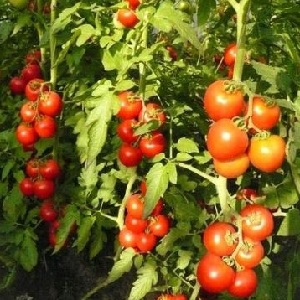 high productivity;
high productivity;- fast ripening of fruits;
- marketable condition;
- transportability;
- storage duration;
- versatility in use;
- resistance to temperature extremes;
- the ability to grow in a shaded place;
- persistent immunity to disease;
- excellent taste;
- unpretentious care.
The downside of the Red Arrow is that you cannot harvest seeds from your own harvest... The disadvantages include the small size of the fruit and the need to tie the bushes to the support.
Other varieties of tomatoes:
Not capricious in care and rich in harvest tomato "Cuteaga"
Weather-resistant and productive tomato "Spetsnaz"
An early harvest of excellent tomatoes - tomato "Bogata khata F1"
How to grow
Sowing seeds for seedlings is carried out in the second half of March (approximately two months before the expected planting of plants in a permanent place of growth).
The soil for this is purchased in a specialized store or prepared independently... In a container for seedlings, a drainage layer must be made, small pebbles or expanded clay are poured, and on top of it is soil.
Planting seeds
Grow seedlings as follows:
- Hybrid seed material is disinfected by the manufacturerTherefore, the grains of the Red Arrow tomatoes are simply soaked in a damp cotton cloth for 2-3 days before germination.
- Then the seeds are hardened... For this, the grains are placed in a refrigerator for 18 hours, after which they are heated for 5 hours near a battery or any heating device.
- In moist soil for seedlings, grooves are made with a depth of 1 cm, seeds are placed in them, covered with soil and moistened. The container is covered with transparent glass or foil. When the first sprouts appear, the container with seedlings is opened and placed in a well-lit place, for example, on a windowsill.
- When the plants have two leaves, they dive into separate containers... For this, peat pots are purchased or plastic cups are used. 10-14 days after the transplant, the first feeding is made with a mullein.
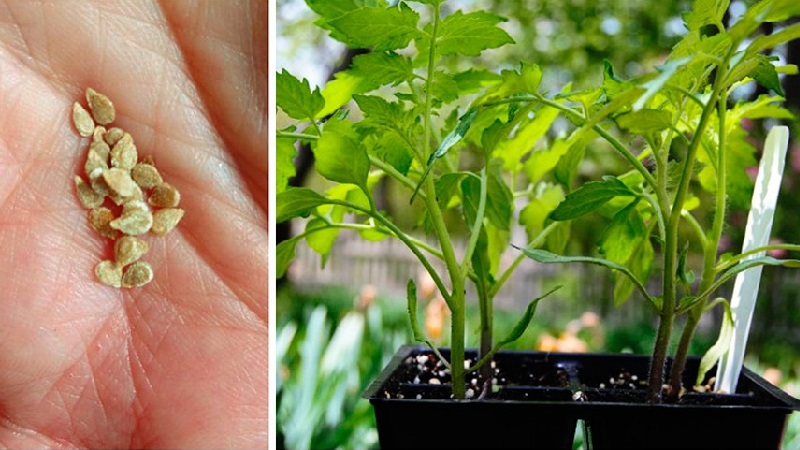
Two weeks before transplanting to a permanent place, the plants begin to harden... To do this, containers with seedlings are taken out onto the street or balcony for 1-2 hours. The residence time of plants in the fresh air is gradually increased. This is how culture gets used to new conditions and becomes stronger.
Planting tomatoes in a permanent place
At the age of two months, the Red Arrow hybrid has 5-7 leaves... Plants are planted in the greenhouse in mid-May, and in open ground in mid-June. When planting, a distance of 40-50 cm is left between the bushes, and 80-90 cm between the rows. To obtain a rich harvest, areas that are well lit, warmed up and protected from the wind are selected.
On a note. Tomato seedlings grow well where pumpkin, beetroot, cabbage, onion and carrot were previously cultivated.
How to water and feed
Moistening the soil is carried out as the soil dries... For the normal development of the Red Arrow, one watering per week is enough. Vegetable growers do not allow the soil to dry out too much, otherwise the tomatoes will be small or even fall off. During the ripening period, the volume of water is gradually increased.
For your information. In extreme heat, watered in the evening so that the water saturates the soil well overnight.
To reduce the risk of plant disease with late blight, watering is carried out strictly under the root of tomatoes... After moistening, the soil is loosened, hilled, weeds are removed from the soil and mulched. Thanks to this, the earth retains moisture longer. Straw and cut grass are used as mulch.
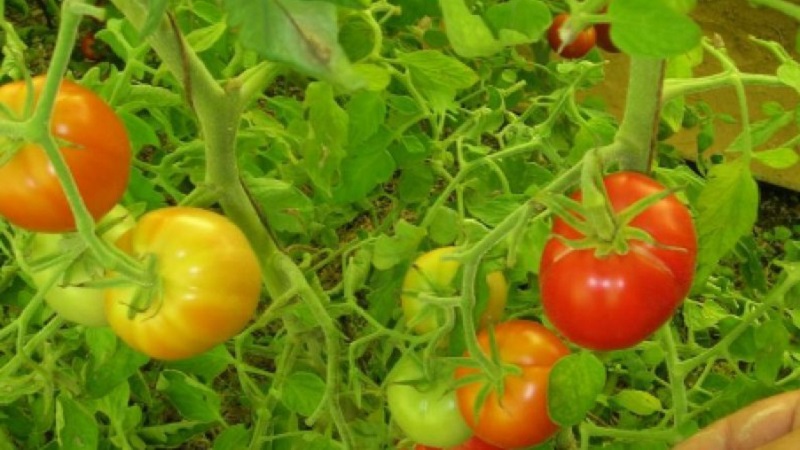
During the entire growing season, the crop needs fertilization. Top dressing is carried out as follows:
- The first fertilization is carried out 10 days after transplanting plants to a permanent place... For this, mineral fertilizers are used: 30-50 g of urea, 50-60 g of superphosphate, 20-30 g of potassium salt, 30-40 g of ammonium sulfate and 100 g of ash are dissolved in 10 liters of water. 0.5-1 l of mineral fertilizer is poured under each plant.
- The next feeding is carried out 21 days after the first fertilization.... For this, 50 g of potassium salt, 80 g of double superphosphate, 3-5 g of urea and 300 g of wood ash are diluted in a bucket of water. So that the fertilizer does not harm the roots and the stem, holes are made around the bush 15 cm from the plant, where the solution is poured.
- During fruiting, tomatoes are fed with nitrophosphate or superphosphate with sodium humate... Summer residents who prefer to apply organic fertilizers use a solution of manganese, iodine or ash. To prepare top dressing, 2 liters of wood ash are poured into 5 liters of boiling water. After cooling, pour in another 5 liters of water, a bottle of iodine (25 ml) and add 10 g of boric acid. The solution is allowed to stand for a day. Before watering, the infusion is diluted with water in a ratio of 1:10. 1 liter of fertilizer is poured under one bush. Some summer residents alternate organic and mineral fertilizing. Also fertilizers are combined. To stimulate the formation of fruits, add 1-2 tablespoons of the preparations "Solution" or "Kemira" to the mullein infusion.
Fertilize tomatoes when watering... For the correct choice of feeding, follow the appearance of the Red Arrow. If the green mass grows vigorously, the application of nitrogen fertilizers is reduced. The yellowing of the foliage indicates an excess of phosphorus, and the appearance of a purple tint on the back of the leaves means that the plant is not enough of this element. For the accelerated formation of ovaries and ripening of fruits, foliar feeding of tomatoes is practiced. For this, diluted iodine or superphosphate is used.
Read also:
Bright decoration on your beds - tomato "Kakadu f1"
A variety with impeccable taste and aroma - tomato "King of London"
Prevention of diseases and pests
The tomato hybrid Red Arrow has strong immunity to most diseases... Late blight is prevented by preventive measures. To do this, in the fall, the garden bed is thoroughly cleaned of vegetation residues. The top layer of soil (10-15 cm) is removed and fresh soil is covered. They use the land on which beans, beans, peas, carrots, cabbage were previously grown. After tomatoes, the soil is not used.
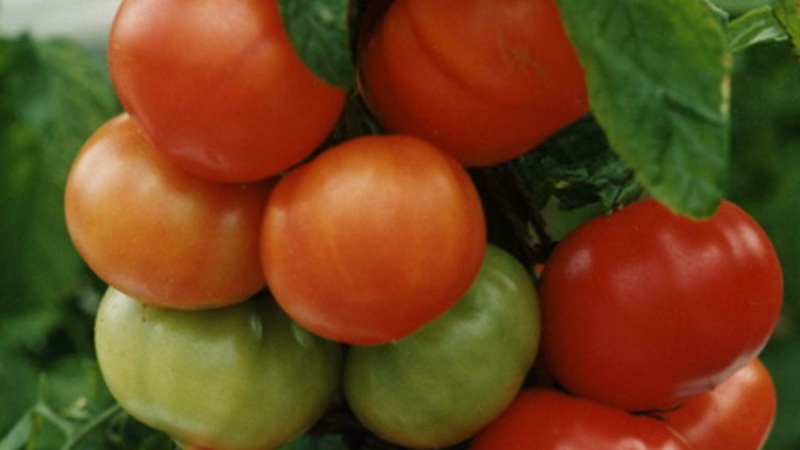
In the spring, before planting plants in a permanent place, the soil is disinfected with a 1% solution of potassium permanganate... Also, as a preventive measure, tomatoes are sprayed with the drug "Fitosporin". The procedure is performed in the evening, when the plants are not exposed to sunlight.
Harvesting and storage
Harvest ripening occurs in June-August... Growers check the bushes daily for ripe fruit. For long-term storage, not spoiled and not diseased tomatoes are selected.
Dry, clean, not overripe tomatoes, without mechanical damage are laid in dense rows in clean wooden boxes. The lid of the drawer must not touch vegetables when closing. Tomatoes can be stored in this container in a cool and well-ventilated place for up to 2 months.
Reviews of gardeners
Tomato Red Arrow F1 has won enduring popularity among experienced and novice vegetable growers. Due to the long list of advantages and the almost complete absence of disadvantages, this hybrid is increasingly found in summer cottages. Reviews about the yield and use of the fruits - below.
Tatiana, Taganrog: “I have been growing different varieties and hybrids of tomatoes for 8 years in a row. Definitely, the F1 Red Arrow tomatoes have become my favorites. The yield suits me. Tomatoes don't require much attention. I looked after the plants in a standard way, like all tomatoes. The fruits are juicy and delicious. I use them both for making salads and for winter storage. Their main plus is that they are stored in the refrigerator for a long time. I did not find any flaws in the hybrid. I will continue to plant this wonderful vegetable ".

Nadezhda, Rostov: “A couple of years ago I bought a dacha, and the neighbors advised me to plant a tomato hybrid Red Arrow. I liked these tomatoes for their simplicity in care and resistance to diseases. The fruits really ripen early. The vegetables grow beautiful, as in the photo of the package with seeds. The tomatoes taste good. I was pleased with the tomatoes. I advise everyone, especially novice summer residents ".
Vladimir, Cheboksary: “There are several types of tomatoes growing in my greenhouse, I always try to grow new ones. In that year, I purchased the seeds of the Red Arrow hybrid. Although the bush is not a standard bush, it still does not take up much space. The culture is not demanding and grows well even in a shaded area. When grown, tomatoes did not hurt anything. I tied up the plants once, when the stems began to bend under the mass of fruits. I collected almost 50 kg of crop from ten bushes. The result exceeded my expectations. The taste of the tomatoes did not disappoint either. I will plant even more bushes next year ".
Conclusion
Due to its unpretentious care and plant resistance to diseases, the Red Arrow hybrid is in stable demand. This crop grows well in the shade, which allows you to plant plants close to each other and save space in the garden or greenhouse. The use of vegetables is universal.Positive qualities make the Red Arrow hybrid a real boon for both experienced vegetable growers and beginners.
You will learn more information about the Red Arrow hybrid in the video below: